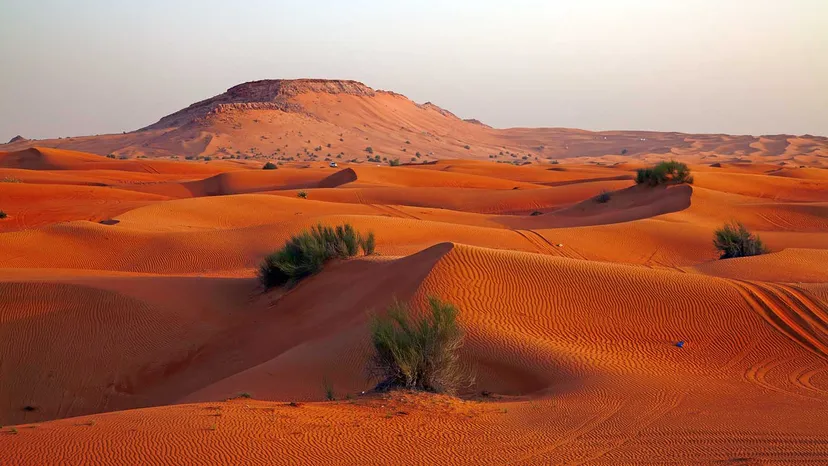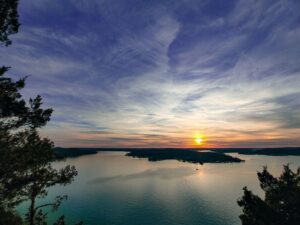Imagine a place where the ground is dry, and the sky is big and blue. This special place is called a desert! Deserts can be hot or cold, but today, we are going to talk about the largest desert in the world. This desert is so big that it could cover many countries. Are you ready to explore this sandy wonderland? Let’s go!
What is a Desert?
A desert is a dry area of land where very little rain falls. Some people think deserts are only hot, but that’s not true! Deserts can be hot like the sun, or they can be cold like ice. They are special places with unique plants and animals that have learned to live in these tough conditions.
Deserts are important because they teach us how life can thrive in challenging situations. Animals and plants in the desert have amazing ways to survive. For example, some plants can store water for a long time, and some animals come out at night when it’s cooler. Deserts are not just empty spaces; they are filled with life!
The Largest Desert: The Antarctic Desert
When people think about the largest desert in the world, they often think of hot places like the Sahara. However, the largest desert is actually the Antarctic Desert! Yes, you read that right! It is located in Antarctica, where it is very cold and covered in ice.
The Antarctic Desert is so huge that it is about 5.5 million square miles (14 million square kilometers) in size. That’s larger than the entire United States! This desert is a polar desert, which means it gets very little precipitation, just like the hot deserts.
Why is Antarctica a Desert?
You might wonder, “How can a place that is covered in ice be a desert?” That’s a great question! The answer is simple. A desert is defined by how much rain it gets, not just by temperature. The Antarctic Desert gets very little moisture, which makes it a desert.
In fact, some parts of Antarctica haven’t seen rain for over two million years! The wind is also very strong in Antarctica, which helps to keep the moisture away. This lack of water is what makes Antarctica the largest desert in the world.
Unique Features of the Antarctic Desert
Even though it is very cold, the Antarctic Desert has some fascinating features. For starters, there are huge icebergs that float in the ocean. These icebergs can be as big as cities! They are made of fresh water and are very important for the ocean’s ecosystem.
Antarctica also has massive glaciers, which are like rivers of ice that move slowly. These glaciers are always changing shape, and they can be very beautiful when the sun shines on them. The ice can sparkle like diamonds!
Another amazing thing about Antarctica is the wildlife. You might think that nothing could live in such a cold place, but there are actually many animals that call this desert home. Penguins are one of the most famous animals found in Antarctica. They are adorable and can be seen waddling around on the ice.
Other animals include seals, whales, and a variety of birds. These animals have special adaptations that help them survive the cold. For example, penguins have thick layers of fat and feathers that keep them warm.
Life in the Antarctic Desert
You may think life in a desert sounds tough, and it can be! But the animals in Antarctica are incredibly adapted to their environment. They have thick fur or blubber that keeps them warm. Some animals even have special blood that helps them to survive in freezing temperatures.
Penguins are great swimmers and spend a lot of time in the ocean, hunting for fish. They can hold their breath underwater for a long time while diving for food. On land, they take care of their chicks and huddle together to keep warm during the harsh winter.
Seals also thrive in Antarctica. They use the ice for resting and breeding. Like penguins, they have a thick layer of fat that protects them from the cold. Some seals can even dive deep into the ocean to hunt for fish and squid.
Whales are also found in the waters surrounding Antarctica. They are the giants of the ocean and can grow to be very large. Whales come to these waters to feed during the summer months when food is more plentiful.
Human Exploration of Antarctica
Although Antarctica is very far away and difficult to reach, many brave explorers have traveled there to study the unique environment. These explorers wear special clothes to keep warm because the temperatures can drop extremely low.
Scientists conduct research in Antarctica to learn more about climate change, wildlife, and the effects of pollution. They work in research stations that are equipped with everything they need to stay warm and safe.
One of the most famous explorers of Antarctica was Ernest Shackleton. He led an expedition in the early 1900s and faced many challenges, including freezing temperatures and harsh winds. His story is one of bravery and survival, showing how strong the human spirit can be.
The Sahara Desert: The Largest Hot Desert
Now that we have explored the Antarctic Desert, let’s take a trip to the hottest desert in the world—the Sahara Desert! The Sahara is located in Africa and is about 3.6 million square miles (9.4 million square kilometers) in size. That makes it the largest hot desert!
The Sahara is known for its beautiful sand dunes, which can reach heights of over 500 feet (150 meters). These dunes are constantly changing shape due to the wind. The Sahara is very hot during the day, with temperatures often rising above 100°F (38°C). At night, it can get quite cold, so people and animals must adapt to these temperature swings.
Life in the Sahara Desert
Despite being so hot and dry, the Sahara Desert is home to many plants and animals. Some plants, like cacti, can store water for long periods. There are also many types of grasses and shrubs that can survive with very little water.
Animals in the Sahara have adapted to the heat by being active during the cooler parts of the day, like early morning or late evening. Some animals, like the fennec fox, have large ears that help to release heat. Other animals, like camels, are known as the “ships of the desert” because they can travel long distances without water.
People have lived in the Sahara for thousands of years. The Tuareg and Bedouin are two groups of people who have adapted to life in this harsh environment. They have traditional knowledge of how to find water and shelter from the sun. They move from place to place, following the seasons and the availability of resources.
The Importance of Deserts
Deserts, including the Antarctic and Sahara, are important ecosystems. They play a vital role in the Earth’s climate and provide habitats for many unique species. Understanding these environments helps scientists learn more about our planet and how to protect it.
Deserts also hold valuable resources, like minerals and fossil fuels. However, it is important to manage these resources carefully to protect the delicate ecosystems. As humans, we must find a balance between using the land and preserving its beauty for future generations.
Conclusion
The largest desert in the world, the Antarctic Desert, and the hot Sahara Desert both teach us about resilience and adaptation. While they are very different, both deserts are home to unique plants and animals that have learned to survive in challenging conditions.
Deserts may seem empty and lifeless, but they are full of wonders waiting to be discovered. Whether you dream of icy landscapes or golden sand dunes, these vast spaces offer a glimpse into the beauty and power of nature. So next time you think of deserts, remember the incredible life they hold and the secrets they keep!






